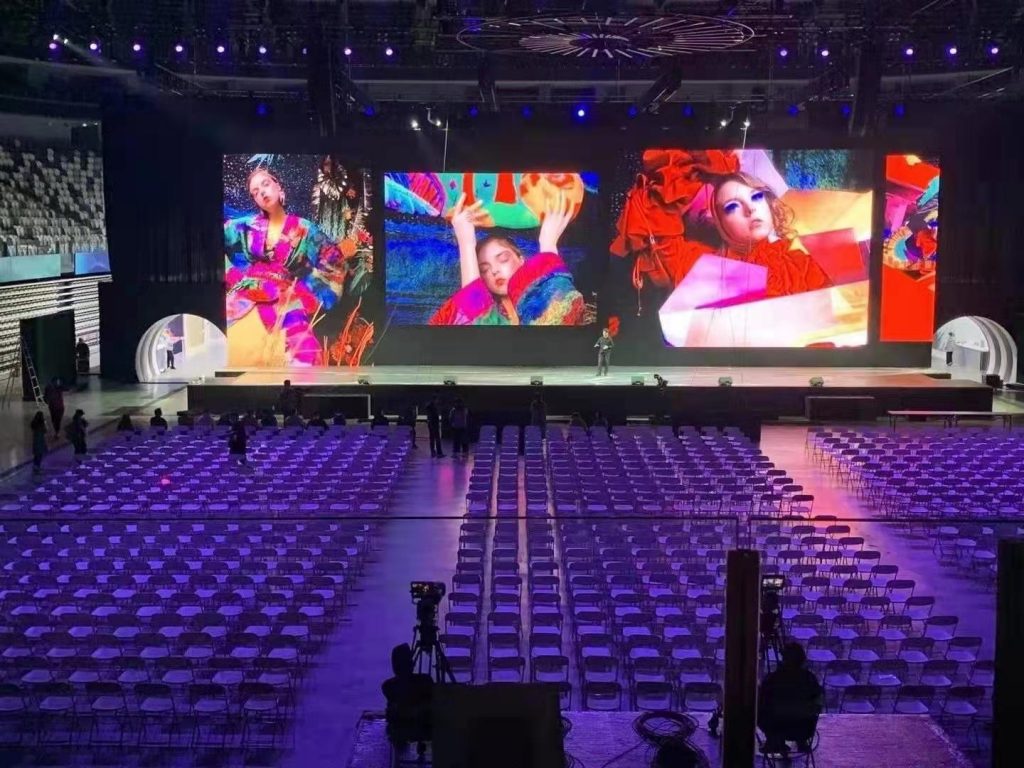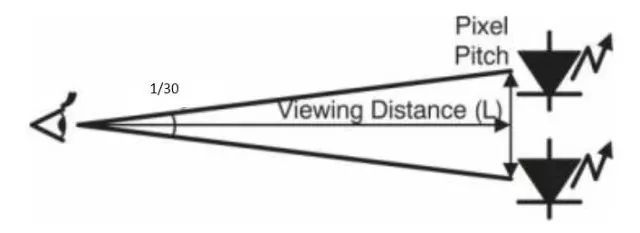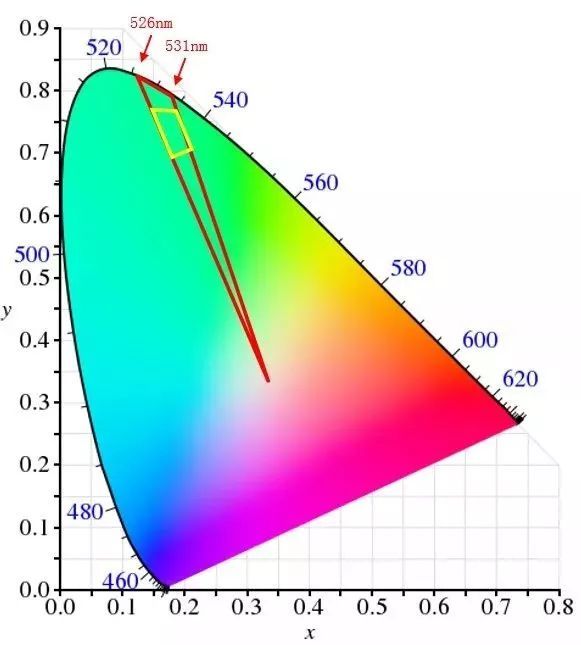The ultra-high resolution of P2.5 vs P3 and P4, presenting an impressive high-definition image effect; with high brightness, long viewing distance, ensuring that the display screen can be viewed from the far area of the stage or commercial area ;Recently, many customers are asking which full-color LED display P2.5, P3 and P4 is clearer and better? What’s the difference between them?
The first thing we need to understand is the meaning of the numbers behind P. In fact, the numbers behind P represent the distance between two pixels or lights (unit is mm), so the point distances of P2.5, P3, and P4 are 2.5mm respectively. , 3mm, 4mm.
The number of points on the same area, P2.5 is more than P3, and P3 is more than P4. For example, there are 160,000 points of P2.5 pixels on a 1 square meter area, about 111,111 points of P3 pixels, and only P4. 62500 points, the smaller the distance, the higher the pixels, and the better the picture clarity. Therefore, P2.5 and P3 display more clearly than P4.

Different from LED displays with large spacing (generally those larger than P2 belong to large spacing), under the LED display with smaller spacing, even if it is less than 0.1, it is a breakthrough, and the smaller the point distance, the more difficult the production will be. Correspondingly increases, the unit square pixel increases, the cost increases, and the price will relatively improve.
Although P2.5, P3 and P4 are not classified into the category of small-pitch LED displays, they also follow this rule. So P2.5 is more expensive than P3, and P3 is more expensive than P4.
This is not to say that P4 is not good, because the larger the point distance on the screen, the farther the viewing distance is suitable. Generally, there is a formula Z best viewing distance = point distance/(0.3~0.8), which is an approximate scale. According to this formula, the suitable viewing distance of the P4 LED display is 5-13m, and the viewing effect will be very good within this scale, which is enough to meet the display effect of daily practice. Of course, if you choose P2.5, P3 LED display, the effect will be very good, but the cost will be higher.

P2.5 display, P3 full-color LED display type: the clarity is very good, the best viewing distance is 2-20 meters, the price is relatively high, and the requirements for pixel/clearness/effect are higher, you can choose these two type.
The P4 full-color display type is the most widely used type in the market. It can be regarded as a commonly used LED large screen type. The pixel density is 62,500 dots/square meter. The best viewing distance is 4-20 meters, and the price is relatively P2.5, P3 has a great advantage, and now many high-definition LED displays are also using this type of LED display.
It is worth noting that the selection of suitable outdoor and indoor full-color LED displays must consider general factors such as viewing distance, screen area, and price. It is suggested here that the selection can meet the daily practice display and application, and the most suitable is the best. .
Will P2.5, P3 and P4 full-color LED displays cause light pollution during use?
High-density full-color LED displays are favored by people in many occasions because of their unique advantages of high brightness, wide color gamut, and high contrast. However, some customers have also mentioned that when such a high-density full-color LED display is used, will it cause light pollution? Is it harmful to the eyes?
According to the current international standards, the Chinese Academy of Metrology has measured the photobiological safety of a P1.66 high-density LED display from the two aspects of retinal blue light hazard and thermal hazard, and selected plasma TV and LCD TV prototypes As a comparison.

The test results show that, under the same brightness and white field conditions, in the blue light band, although the peak brightness of the LED display is higher than that of the other two samples, its narrow band characteristics make the retinal hazard index obtained after weighted integration different. Not higher than plasma TV and LCD TV, there is no significant difference in retinal photobiological safety measurement data of three different displays. Among the three samples, the measurement effect of LED display is even better than that of the other two displays.
It should be noted that any display screen that is set too high brightness and long-term viewing may be harmful. Therefore, no matter what method of full-color display screen is used, when setting the brightness, it should be appropriate and installed outdoors. When the LED display is used, it is best to add a light control sensor. As long as the value is set, it can automatically adjust its own brightness according to the surrounding brightness.
In addition, the staff who maintain the LED display should also pay attention to eye cleaning, develop excellent eye habits, combine work and rest, and consciously and actively protect their eyesight.